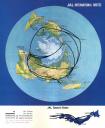Just when I think I have a fairly good idea about what the Chinese Nationalist Party, aka Kuomintang (KMT) has been up to over the years, I read the following text in a BBC obituary of Burmese warlord, gangster, opium smuggler and “prince of death” Khun Su.
Born in 1933 to a Chinese father and a mother from Burma’s Shan ethnic group, Khun Su’s given name was Chan Chi-fu.
Growing up in the Burmese countryside, he had little education and came of age fighting Chinese nationalist Kuomintang (KMT) soldiers, who had been forced out of China by the Communists.
The KMT rapidly took over and expanded the opium trade in the region, but Chan Chi-fu and his gang gradually began to exert their influence during the 1960s.
Allied with the Burmese government, they are thought to have fought against both the KMT and the Shan nationalists in exchange for being allowed to continue trading opium.
All of us here know that the KMT as an organization, following their defeat by the CCP in the Chinese civil war, fled to Taiwan where they ruled a one-party police state for decades, and that many of them had been engaged in warlordism and banditry on the Chinese mainland before and during the civil war (this corruption was one factor in their defeat,) but I do not recall reading before about KMT members who fled to and engaged in banditry in SE Asia in large numbers. I do, however, find it a little amusing that Khun Su would, with his history of fighting the KMT, “play host to journalists and Western tourists, treating them to Taiwanese pop music.” After fighting KMT bandits in Burma, mightn’t be be a little bit sour towards Taiwan?
Anyway, do any readers have any suggestions for sources to look at on similar KMT banditry/criminal activity in SE Asia, following their flight to Taiwan?








